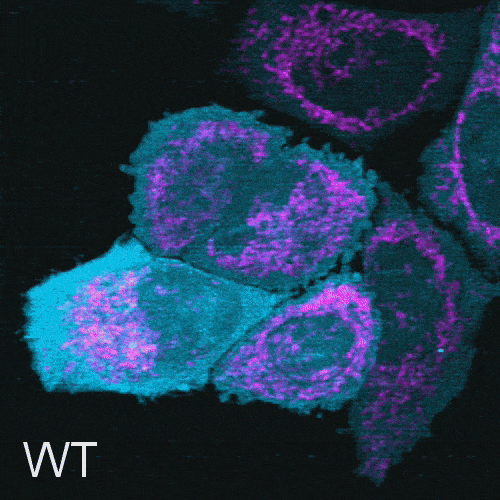For around a decade, scientists researching Parkinson's disease have been probing a pathway involved in the way brain cells process energy, and now a mystery around the role of a particular protein has been solved. The team has produced an unprecedented "live action" view that shows how this protein is activated, providing researchers with a blueprint for therapies that help prevent cell death associated with the condition.
Parkinson's disease takes hold when nerve cells in the brain responsible for producing the chemical dopamine die off or become impaired, but the mechanisms behind this process has remained unclear. Research has pointed to the role mitochondria might play, as the power plants that provide cells with chemical energy, and how that role might take on a sinister nature when mitochondria begin to malfunction.
As we age, mitochondria become damaged and build up in the body, with studies showing how they can change shape and themselves create a toxic environment for diseases like Parkinson's and Alzheimer's to take hold. Research has shown that a protein called PINK1 plays an important protective role in the face of this threat, by tagging damaged mitochondria for destruction and removal, enabling them to be replaced with healthy mitochondria instead.

But when there are defects in the PINK1 protein or other components of this important pathway, the mitochondria are unable to be recycled and cells become starved of energy. In this way, PINK1 has been known to play an important role in the early onset of Parkinson's disease, and scientists have been able to capture differing images of they way it is activated. Now scientists at the Walter and Eliza Hall Institute of Medical Research have used cutting-edge cryo-electron microscopy technology to observe the protein in "exquisite molecular detail" and join together the different pieces of the puzzle.
“Many papers from laboratories around the world – including ours – have captured snapshots of the PINK1 protein," says first author Zhong Yan Gan. "However, the differences in these snapshots has in some ways fueled confusion about the protein and its structure. What we have been able to do is to take a series of snapshots of the protein ourselves and stitch them together to make a ‘live action’ movie that reveals the entire activation process of PINK1. We were then able to reconcile why all these previous structural images were different – they were snapshots taken at different moments in time as this protein was activated to perform its function in the cell.”
According to the scientists, the discovery could have profound implications in the development of drugs to treat Parkinson's disease. Companies are already targeting the PINK1 protein to that end, but "have been flying a bit blind." With this new understanding of its structure, the hope is that drugs can be developed to switch on the protein and slow or even stop the progression of the disease.
“One of the critical discoveries we made was that this protein forms a dimer – or pair – that is essential for switching on or activating the protein to perform its function," says Gan. "There are tens of thousands of papers on this protein family, but to visualize how this protein comes together and changes in the process of activation, is really a world-first."
The research was published in the journal Nature, while the video below provides some further information.




